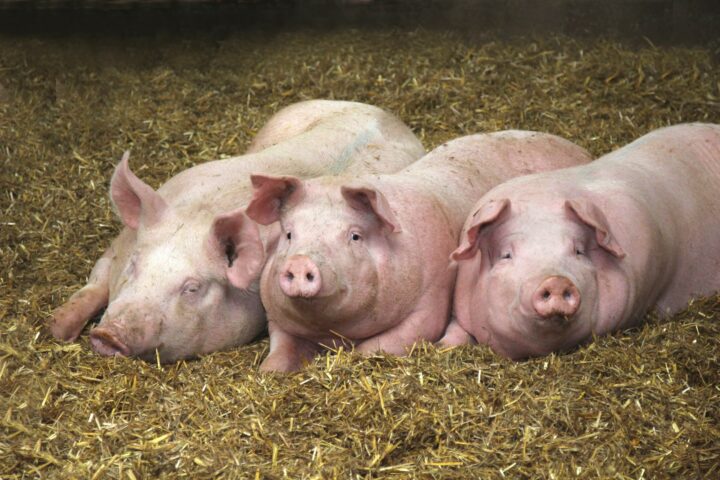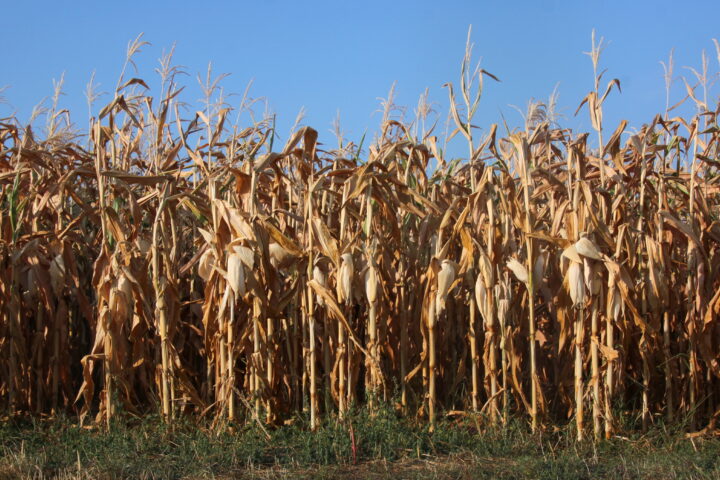
Genetically modified maize – a success story, even in skeptical Europe
Europeans are still resisting the cultivation of genetically modified crops – but this doesn’t mean they want to forgo the benefits of these products. In Europe, too, genetically engineered products have long since found their way to feed troughs and dinner tables.
Friday, February 12, 2021
In brief
- The cultivation of genetically modified crops is already a reality in the world's major agricultural countries.
- Already a quarter of the maize grown globally is optimised by genetic engineering.
- The advantages are higher yields, less pest infestation and lower quantities of pesticides needed.
Over and over again, opponents of genetic engineering have argued that this technology has not delivered on its promise. Genetically modified crops, they say, have not yielded the benefits that proponents have so loudly touted. Particularly in Europe, there is considerable skepticism about modified seeds and products; the narrative that genetically modified crops have failed is all too common.
The cultivation of these crops is banned in most European countries. At the EU level, many people are fighting to keep that ban in place. Governments claim to represent public opinion in their opposition to genetic engineering, blocking any attempts to ease the strict laws that are currently in place.
Away from the spotlight, however, in the back rooms of Brussels, the political reality is a bit more complicated. In early January, the EU Commission approved the import of eight genetically modified plants into the EU. This makes a total of 79 plants that can be imported despite being genetically modified. The focus is on cotton, maize, rapeseed, soy and sugar beets. These plants have been made resistant to herbicides or insects, and are produced in countries that permit the cultivation of genetically modified varieties.
In Europe, these products are used as feed or as components in food production. Apparently, such imports are indispensable. And it appears that the producing countries are relying largely on genetically modified varieties, in contrast to what opponents of genetic engineering are saying. In the future, Europe will no doubt be importing more genetically modified rapeseed, soy and maize – simply because more and more cultivable areas in the major agricultural countries are being used for these crops. Today more than a quarter of the world’s maize is genetically modified.
Many advantages for farmers
A comprehensive meta-study conducted in 2018 explains why this is the case. It concludes that genetically modified maize, in particular, is a success story, with average yields about 10 percent higher than those of conventional varieties. The reason: much less infestation with pests. Genetically modified maize also contains about one-third fewer plant-specific toxins, such as mycotoxins. What’s more, the research reviewed in this meta-study showed no significant effects on either humans or the environment.
Because of the researchers’ high standards for the studies they reviewed, it was impossible to draw significant conclusions about the reciprocal effects of pesticide use. The data were too sparse to support such conclusions. According to the authors, it is unclear whether cultivating genetically modified maize makes it possible to reduce the use of pesticides.
However, an earlier meta-analysis of 147 studies from a variety of countries concluded that pesticide use could in fact be dramatically reduced when growing genetically modified crops – by 37 percent overall, and by as much as 43 percent in the case of insect-resistant varieties. That study, which was conducted by agronomists in Göttingen and looked at genetically modified maize as well as other crops, also reported a significant increase in yields. Moreover, the use of genetically modified seeds has been shown to increase farmers’ incomes – despite the higher prices of the new seeds.
Making the most of scarce land
It is not only producers who benefit from increased yields. Higher yields are also essential for feeding a growing global population, while conserving resources. The usual approaches to genetic engineering focus strongly on controlling pests and minimizing environmental factors that reduce yields.
The current defensive approach might soon be coupled with an offensive approach. As a study published in 2019 revealed, improved growth might also increase maize yields. In field experiments, harvest yields increased by 10 percent when a gene that controls plant growth was modified. This was true whether or not growth conditions were optimal. These are gratifying findings, given the increasing demand for agricultural land and the challenges of climate change.
European policymakers, too, should finally acknowledge reality. The benefits of genetic engineering are clear. It is time for genetically modified plants to find their way to Europe’s fields and dinner tables, and not only to feed troughs.
“Jumping genes”
We have long known that genes can “jump.” This was first discovered in 1948, and the scientist who discovered this phenomenon was awarded the Nobel Prize in 1983. We now know that jumping genes, known as transposons, make up approximately half of the human genome, and that fraction is much higher in certain plants. They are one of the reasons for an organism’s genetic variability. Transposons therefore play a crucial role in evolution.
Maize provides a good example of the role transposons can play. When a transposon “jumps” into a gene that is responsible for pigmentation, for example, the gene loses its function and the maize’s kernels become largely colorless. If the transposon jumps out, however, dark spots appear on the kernels, giving them a speckled appearance. Scientists suspect that the maize we know today is the result of this kind of natural variation.
Sources
Related articles

What’s Really in Your Shopping Basket
Genetic engineering in our shopping basket? Yes – and much more often than we think. Whether it’s pasta, bread or vegetables: many of the everyday products we consume come from mutation breeding, which involves altering the genome and is considered safe. It’s high time to debunk the common myths.

Genomic breeding methods are not given a chance to prove themselves
Modern genomic breeding methods are legally classified as genetic engineering – and are therefore still effectively blocked. Yet we have been eating genetically modified plants for decades, just under the label of “classical mutagenesis.” The new, more precise techniques are regulated more strictly than the old ones, even though they are considered safer from a scientific perspective. A contradiction that urgently needs to be corrected. The EU is setting a good example.

No Pig Business: Why Testicle-Free Boars Are a Clear Win for Animal Welfare
New breeding methods are opening up new possibilities in both plant and animal breeding. They allow targeted genetic changes that can make animals more resilient, adaptable, and healthier.

Stagnation instead of progress: Switzerland risks falling behind in new breeding techniques
An overview article in Schweizer Bauer shows how much the new breeding methods are preoccupying farming circles. Once the consultation process on the federal law has been completed, a bill is expected – then it will become clear whether there is actually the political will to approve it.

